IKEA through the ages: how our favourite furniture store took over the world
The rise of a flatpack empire
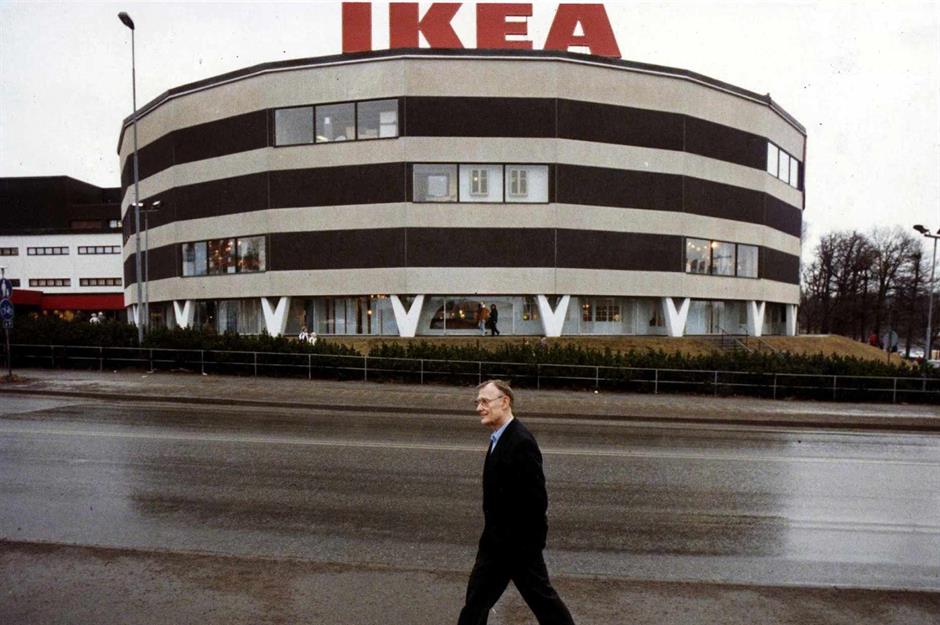
Famous for everything from flatpack furniture to steaming plates of meatballs, our favourite Swedish home furnishings store has been around for more than 80 years. Many of IKEA’s products have become household names over the decades and some have gone on to become collectors' items worth thousands. But where did this $22 billion (£17.4bn) empire begin?
From its humble beginnings in rural Sweden, click or scroll on to discover the history of this iconic brand and its global influence from Austria to Japan.
Meet the IKEA founder
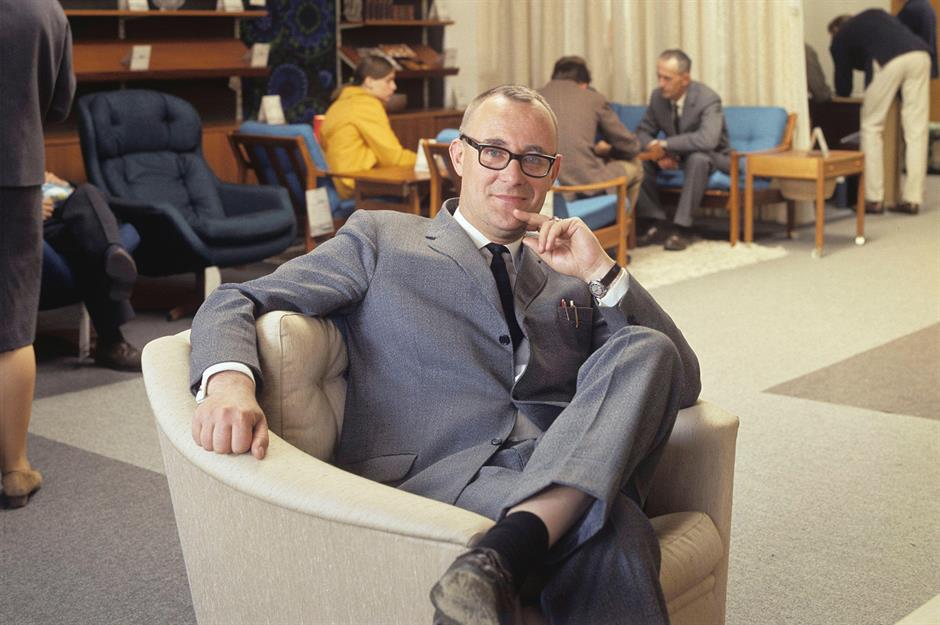
The man behind IKEA, Ingvar Kamprad was born in 1926 in a quiet farming village in southern Sweden. From an early age, Kamprad had an entrepreneurial spirit – he started selling matches to make money at the age of five.
As a reward for excelling at school, his father gave him a sum of money which he used to establish IKEA in 1943 aged just 17. The word IKEA is an acronym of Kamprad’s initials combined with Elmtaryd and Agunnaryd, the farm and village where he grew up.
Expanding the range
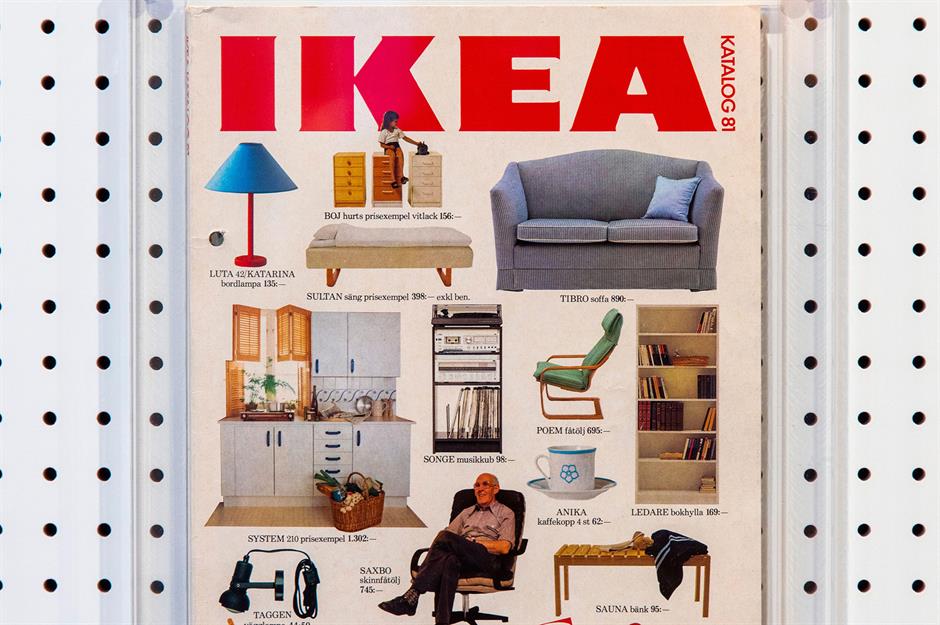
Kamprad started his fledgling business selling replicas of the contemporary table in his uncle’s kitchen, which became a runaway success. In 1948, the entrepreneur expanded his furniture range and began to offer a selection of other affordable pieces by mail order.
The first annual IKEA catalogue was launched in 1951 and the first showroom followed soon after in 1953.
The first IKEA store opens
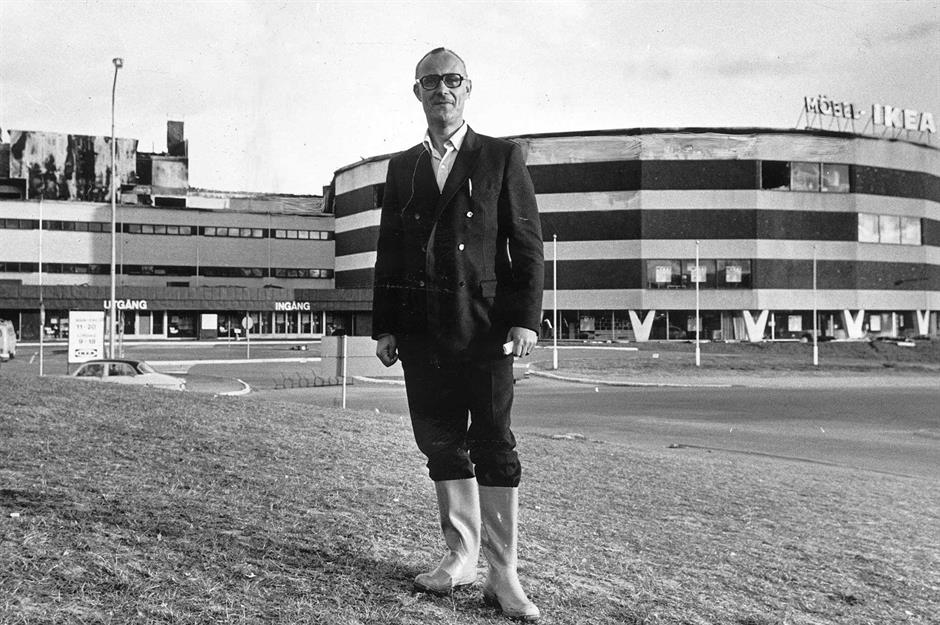
It wasn’t until 1956 that Kamprad had his eureka moment when he saw two delivery men removing the legs from a table to fit it into their vehicle. This incident sparked the beginning of flatpack furniture as we know it today.
Kamprad realised that there was a gap in the market for affordable furniture that customers could construct themselves. Sales shot up and the first IKEA store opened in Älmhult, Sweden in 1958.
A self-service revolution
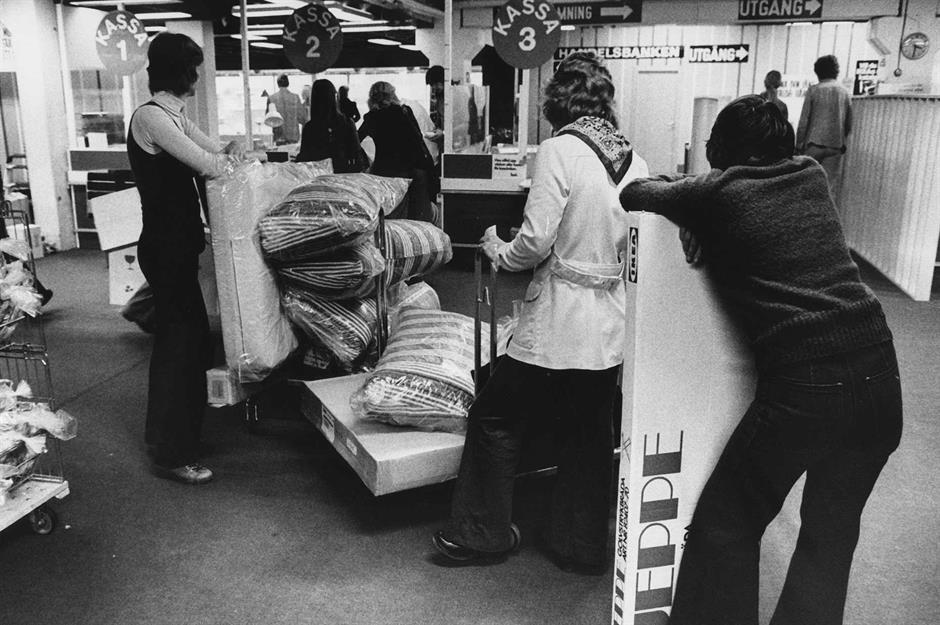
Building on the brand's success, IKEA's flagship superstore opened to the public in 1965 in Kungens Kurva, just outside Stockholm. At the time, it was the largest furniture store in northern Europe, however, it wasn't open long before disaster struck.
In 1970, an electrical fault resulted in a devastating fire, causing the shop to close. But repairing the store gave the company the chance to rethink its format. A new self-service area was established where buyers could pick up their flatpack furniture to assemble at home – an element still present in IKEA's superstores today.
IKEA goes international
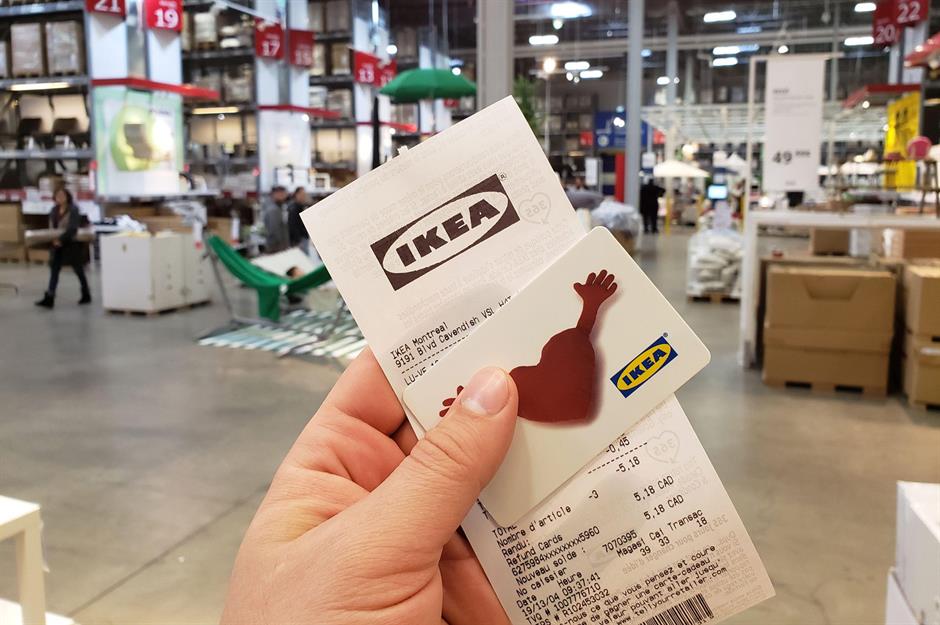
In the years that followed, the firm expanded exponentially as stores were opened throughout Scandinavia and the rest of Europe, before the brand eventually went global.
Today, the IKEA Group owns a whopping 481 stores in 63 markets and while the classic IKEA look remains consistent across the world, the brand has made some interesting adaptations to suit the needs of local consumers...
IKEA in Germany
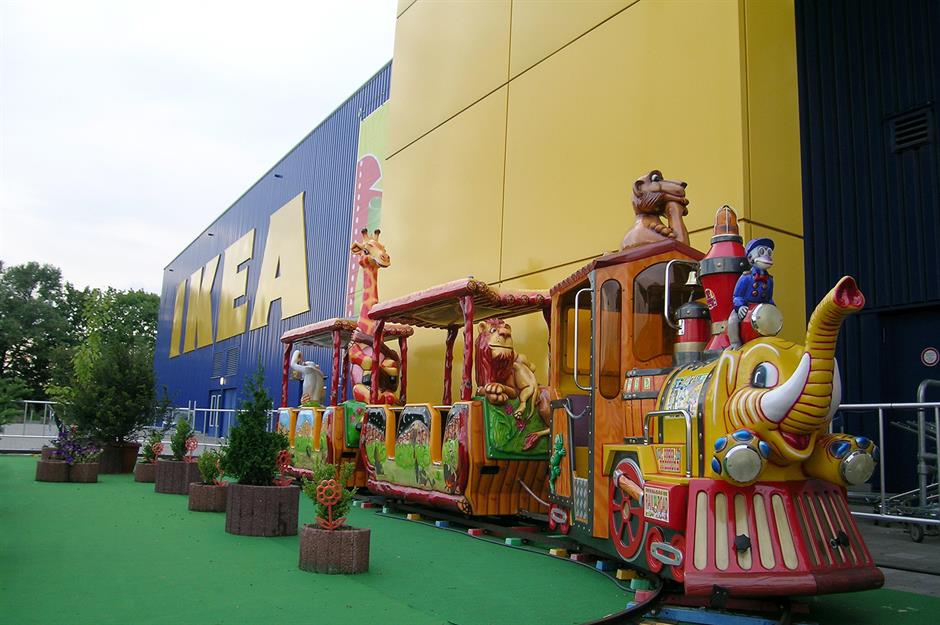
Holding the record for the most IKEA stores in the world, the first store in Germany opened in 1974. Studies from data platform Statista show that when it comes to brand awareness, 94% of Germans recognise the iconic blue and yellow logo. Of that 94%, 71% claim to be fans of its products.
It makes sense then that more than 15% of IKEA's total sales in 2024 came from Germany, making it the most profitable market for the home furnishings giant.
Innovative store features
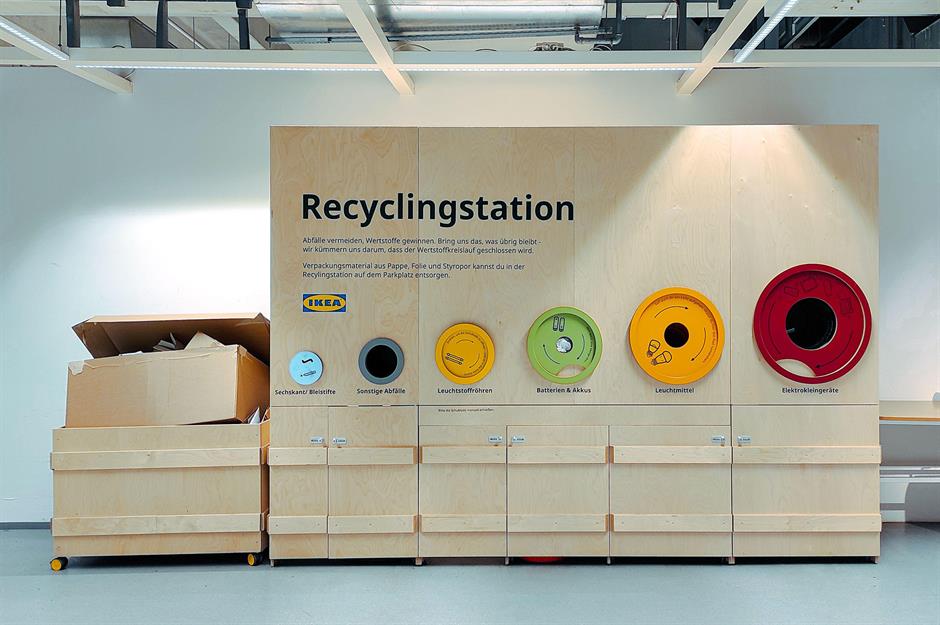
With 54 stores around the country, Germany pulls out all the stops when it comes to attracting customers. IKEA Germany is noted for its innovation and many stores include features like recycling stations (pictured here) and playparks for kids.
In 2024, IKEA Germany announced its plans to introduce 1,000 new fast-charging stations for electric vehicles across all of its stores from 2025 as part of its efforts to fight climate change.
IKEA in America

IKEA’s most dramatic market expansion has taken place in America, where the doors of its first US store opened in Pennsylvania in 1985.
Banking on its increasing popularity across the nation, the company unveiled plans to invest $2.2 billion (£1.7bn) over three years, opening 17 new locations and creating upwards of 2,000 new jobs from 2023, according to the Wall Street Journal. The US is the second-most lucrative market for the Scandi company, with just over 13% of total sales coming from American stores in 2024.
A shift to US tastes
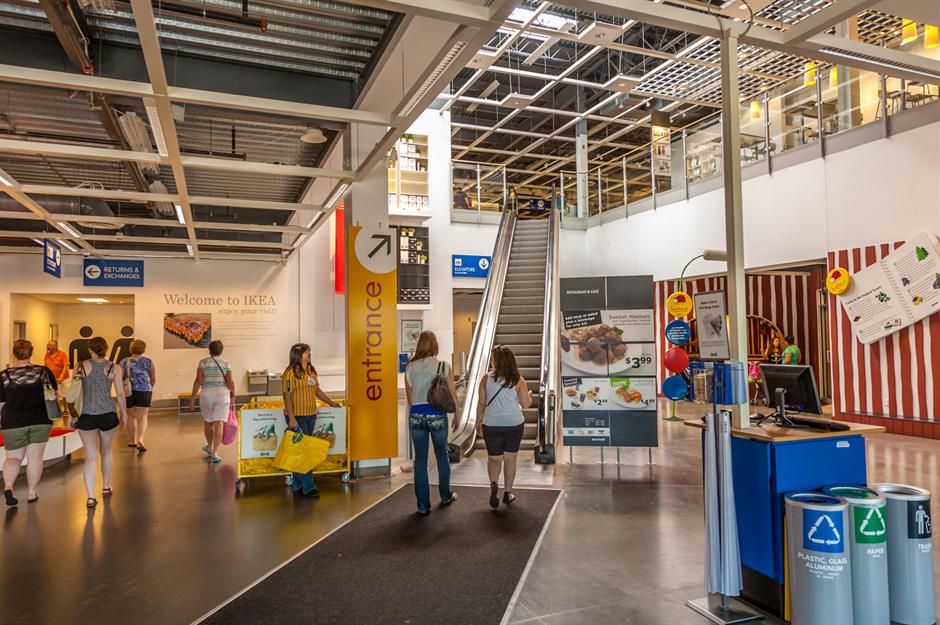
Today, there are 51 IKEA locations across the US, many of which offer 'plan and order points' where customers can plan the layout of a certain room in their home with the help of in-store consultants before placing their orders.
Over the decades, IKEA has taken steps to shift its designs to reflect the tastes of American buyers. After unusually high sales of vases were reported in US stores when the chain first opened in the 1980s, the company decided to swap out its small Swedish-style glasses for larger sizes that American consumers were more accustomed to.
IKEA in Canada
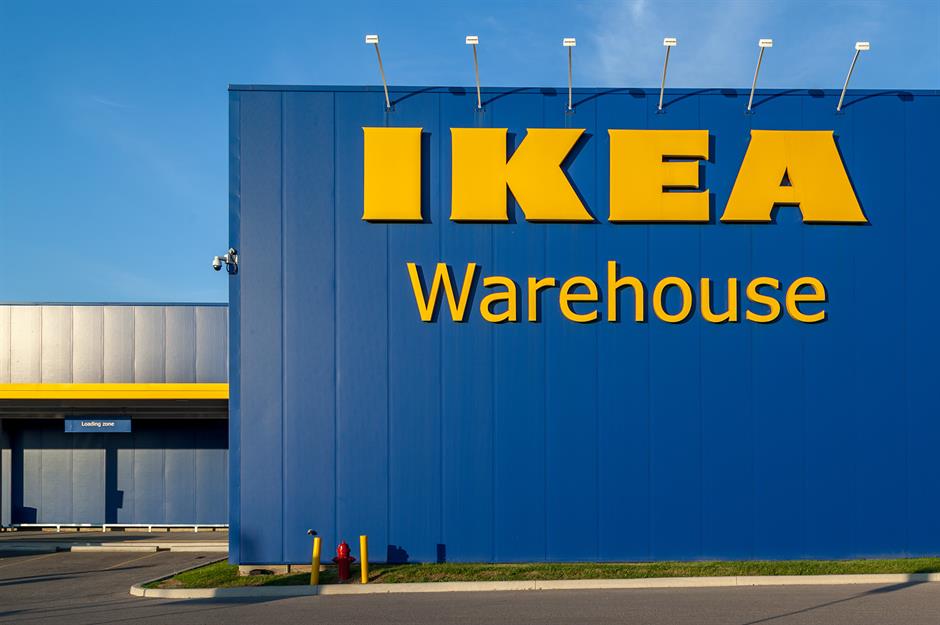
Interestingly, the first IKEA store in Canada opened in British Columbia in 1976, some nine years before the first American store. A rapidly expanding market, there are now 16 stores across the nation.
IKEA reported that its Canada stores saw sales figures of CA$2.8 billion ($2bn/£1.6bn) in 2024 after more than four decades of operation in the country.
Meanwhile, food sales saw a dramatic increase of 11% up to CA$137 million ($97m/£77m), including 22.9 million meatballs, 2.9 million plant balls and 3.3 million hot dogs – talk about hungry consumers!
Affordable, quality furnishings
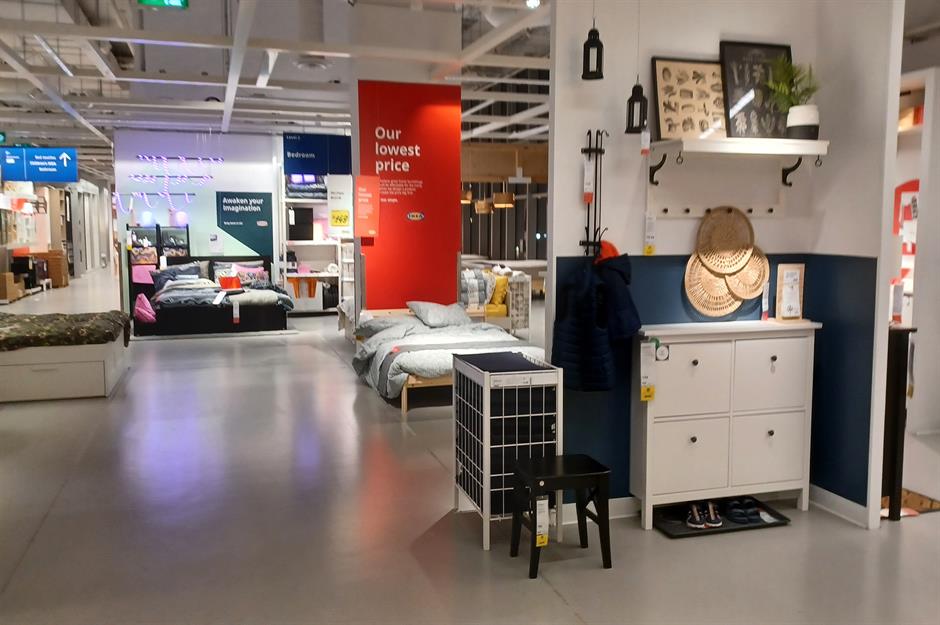
According to Selwyn Crittendon, CEO and Chief Sustainability Officer of IKEA Canada, the average Canadian customer seeks "affordable and sustainable solutions to live a more fulfilling life at home", especially in light of the ongoing cost-of-living crisis.
Consequently, the company invested over CA$80 million ($56m/£45m) in 2024 to reduce prices across a number of popular items, including the iconic KALLAX shelving system and its range of IKEA kitchens. At the start of 2025, a further CA$50 million ($35m/£28m) investment was announced to cut product costs even further for consumers.
IKEA in the UK
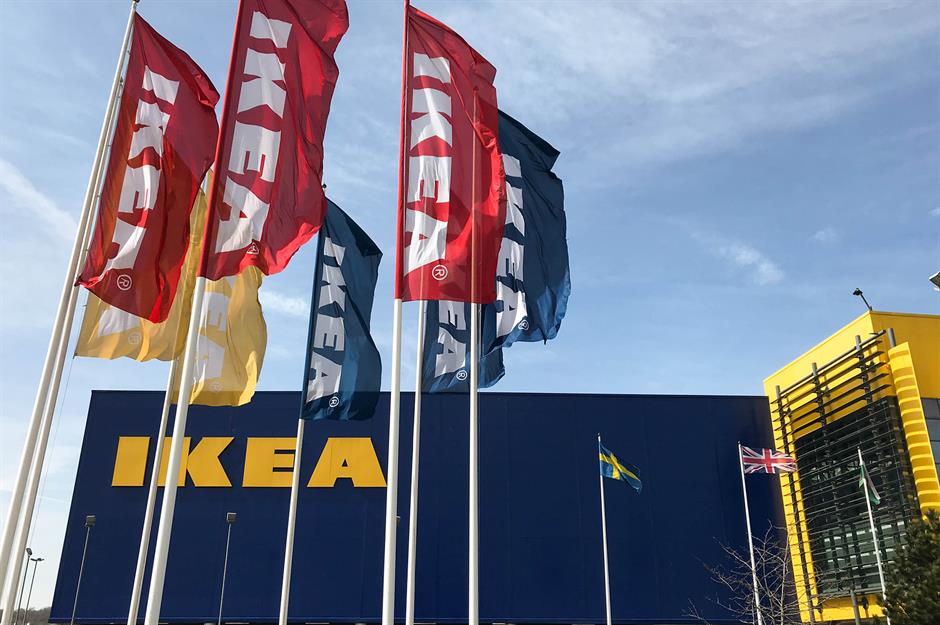
IKEA's first UK offshoot launched in the northwest of England in 1987 and since then, the company's affordable flatpack furniture has taken the nation by storm and resulted in the opening of 21 stores. Hammersmith in London even has the honour of hosting the UK's first standalone IKEA restaurant serving the brand's iconic meatballs, which opened in late 2024.
Mirroring the firm's strategy in Canada, accessible pricing continues to be a focus for the UK market and in 2024, IKEA announced plans to invest more than £117 million ($148m) to lower costs across its furnishings range.
A new London megastore
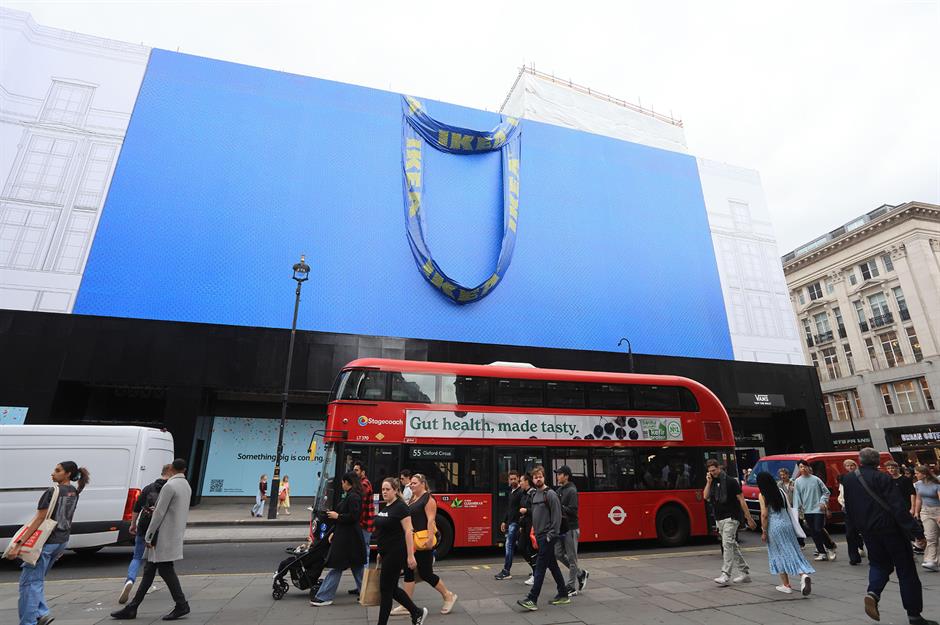
One of the biggest expansion projects for IKEA in the UK is the upcoming opening of its first London superstore on Oxford Street. While the new store was first hinted at in 2015, it's finally due to open in the spring of 2025.
A major outpost for the brand, the store will be spread across 82,000 square feet (7,618sqm) and six floors and will include retail space, offices, a market hall and even a Swedish deli. So sit tight London, the meatballs are coming…
IKEA in France
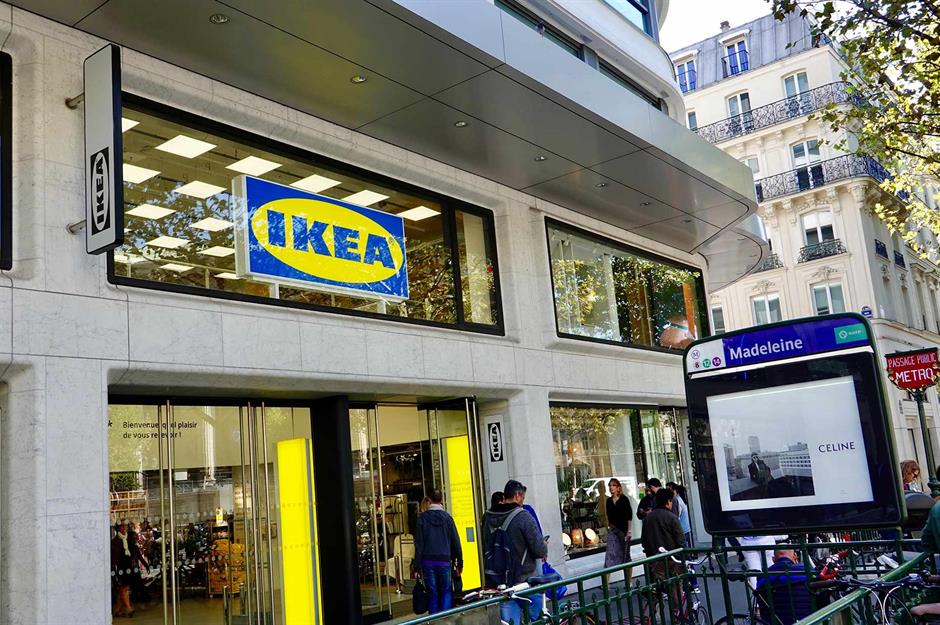
The first IKEA store landed in France in 1981 amid a period of expansion for the Scandi company. The move paid off and France is now IKEA's third-most lucrative location, responsible for 9.3% of global sales in 2024.
There are a total of 28 IKEA stores across the nation and it looks as though that number is only set to grow. The homeware giant announced that it would invest €1.2 billion ($1.3bn/£998m) into the French market from 2023 to 2026.
Catering to the tastes of discerning local shoppers, the company chose to open the first branch of IKEA Décoration in Paris in 2021. The concept store focuses on interior accessories and soft furnishings as opposed to large items of furniture.
Experimental concept stores

The French capital has been at the forefront of IKEA's most experimental ventures for some time. In a move to bring the brand into more densely populated areas, one of the first small-format city-centre stores opened in Paris in 2019 (pictured). A stark contrast to its typical sprawling, out-of-town locations, the retail space was France's smallest IKEA store at the time of its opening.
Measuring 58,125 square feet (5,400sqm), the store offered feng shui services, as well as home renovation and furniture repair workshops.
While the shop closed in September 2024 amid sky-high rents and traffic restrictions, the concept has gone on to inspire other small-format stores in London, New York City and Tokyo.
IKEA in Austria
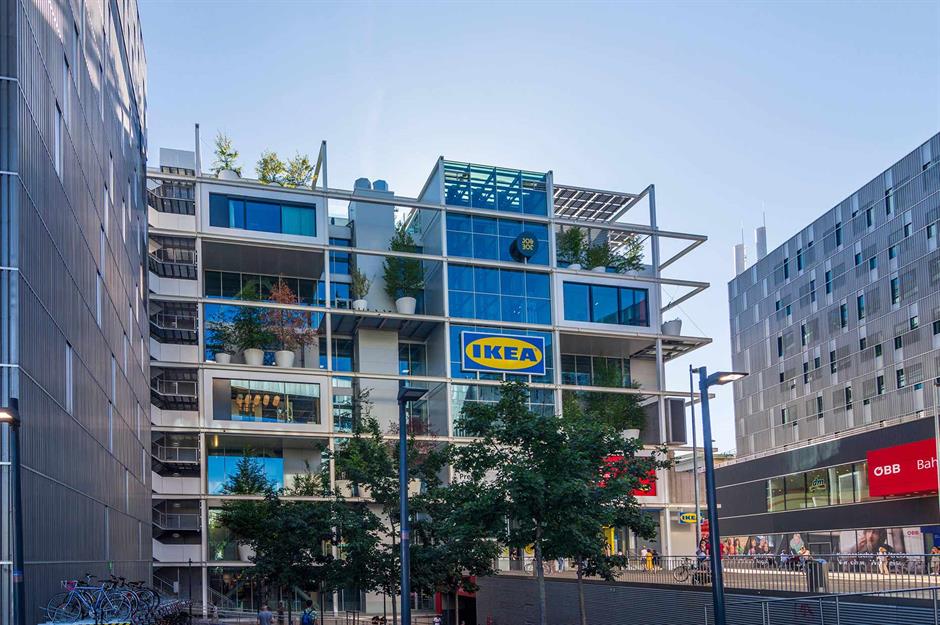
Home to eight IKEA stores, the Scandi company entered the Austrian market in 1977 when it opened its first store in Vösendorf, a town in Lower Austria.
While IKEA may have a smaller presence in Austria than in some of its European neighbours, the country is home to one of the world's most innovative IKEA stores.
Located in Westbahnhof in Vienna, the building differs from the company's usual blue and yellow monoliths. Its unique architecture was inspired by IKEA's minimalist shelving units, while its eco-conscious design addresses Austrian shoppers' concerns about sustainability. The exterior metal frame and rooftop house 160 trees, which help cool the urban microclimate – the company says the foliage can even reduce the temperature at street level.
A digital shopping experience
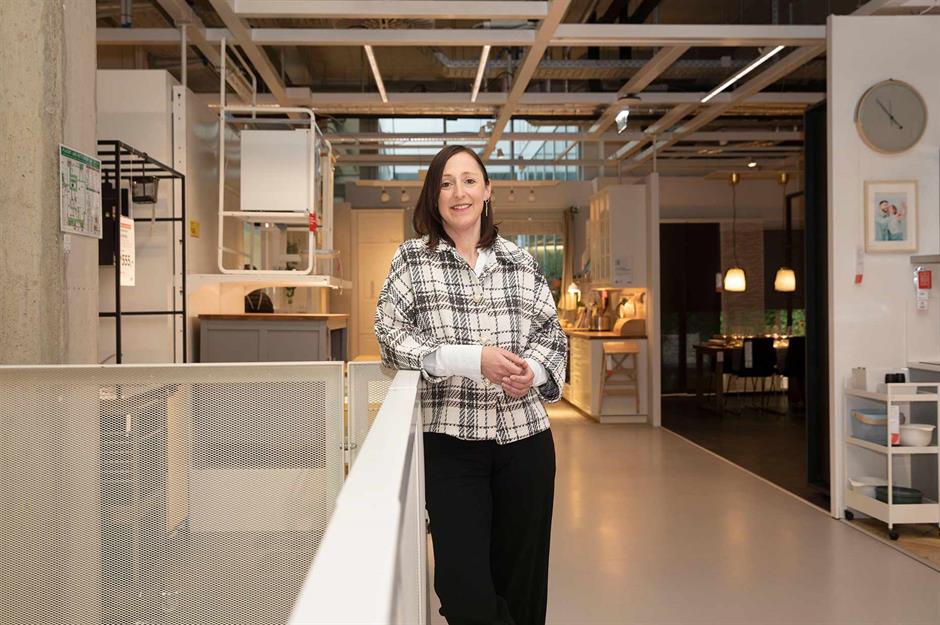
Pictured here is Nicole Reitinger, the Chief Financial Officer of IKEA Austria, at the Westbahnhof store in the centre of Vienna.
Unusually, the seven-floor superstore is designed for pedestrians, so there's no parking. Because of this, it offers a digital shopping experience where buyers can scan items on their phones and make purchases via the IKEA app. Larger items are delivered to shoppers' homes or pick-up locations, while smaller items can be taken from the store.
A new venture for the company, the sprawling structure was designed as a local neighbourhood hub. Alongside the main store, the building contains a public roof terrace, a café and even a hostel on the upper two floors.
IKEA in Australia
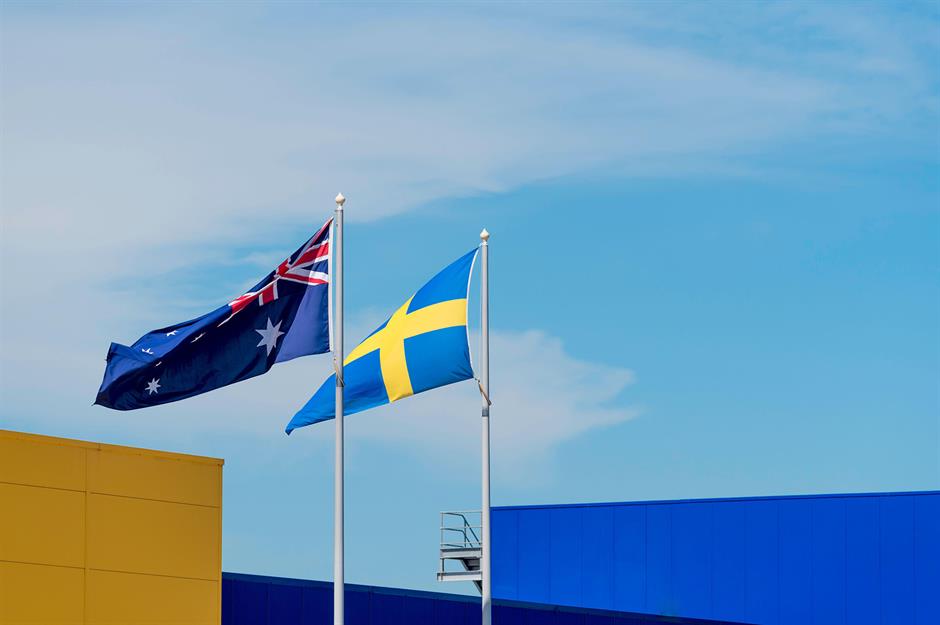
IKEA first arrived in Australia in 1975 and now offers 10 stores across the country. Best-selling items among Aussie shoppers include the GLADOM tray table, the FABRIKÖR glass door cabinet, the HEKTAR work lamp, the NISSEDAL mirror and the APPLARO storage bench.
While Australian IKEA products look similar to most of the others in the Western market, the company has introduced its own twist in the dining hall in the form of plant-based hot dogs.
Investment in sustainability
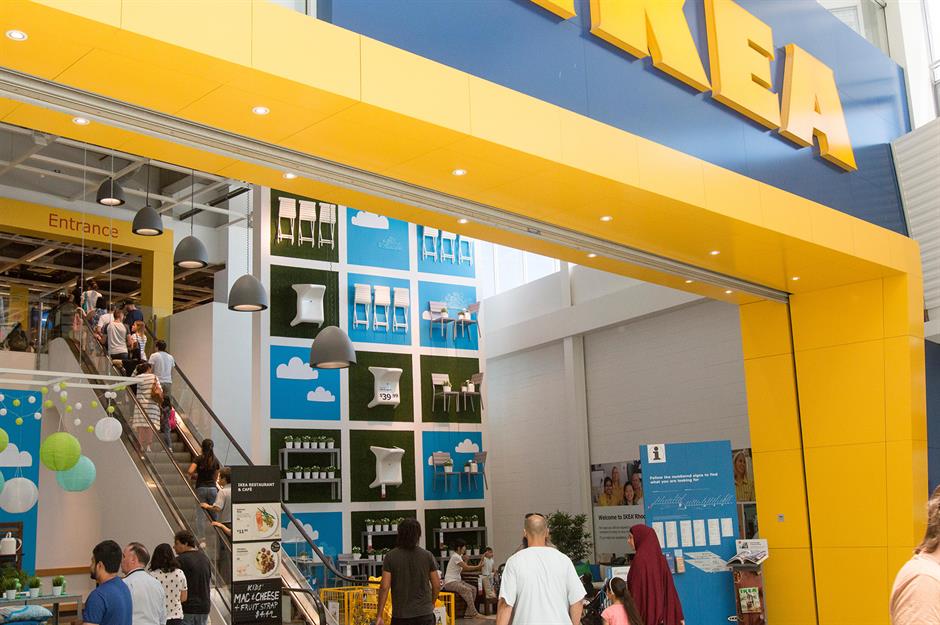
Conscious of the environmental impact of its operations, IKEA’s Australian stores have put significant investment into emission reduction for its delivery vehicles.
In the spring of 2024, IKEA announced plans to spend AU$4.5 million ($2.9m/£2.3m) on a national charging infrastructure network across its stores and distribution sites for private and public use to support the company's move towards electric delivery vehicles.
IKEA in South America
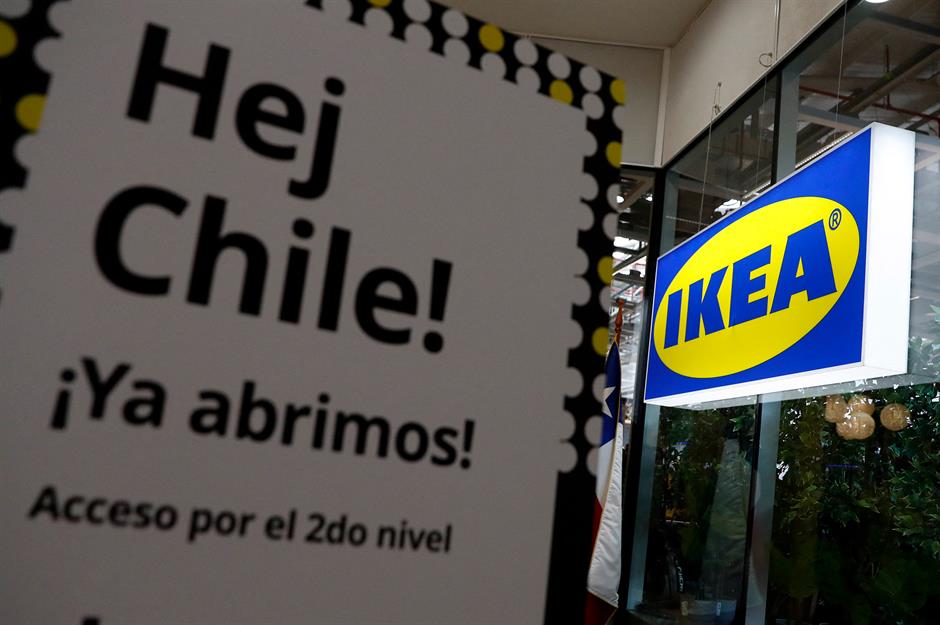
IKEA first touched down on the South American continent in 2022 with a store opening in Santiago, Chile and then Colombia, where a second store opened in Mallplaza NQS in the capital of Bogotá in 2023.
The new Colombian outpost is South America’s largest IKEA, comprising 280,000 square feet (26,000sqm) across three storeys with 40 room displays, a 600-seat restaurant and a range of over 6,000 quintessential IKEA products.
A runaway hit

IKEA has proved a runaway hit in the South American market, with eager shoppers queuing for entry at the opening of the inaugural store in Santiago back in 2022 (pictured here).
IKEA now has four locations open across South America, including two further Colombian stores in Medellín and Cali.
IKEA in Africa
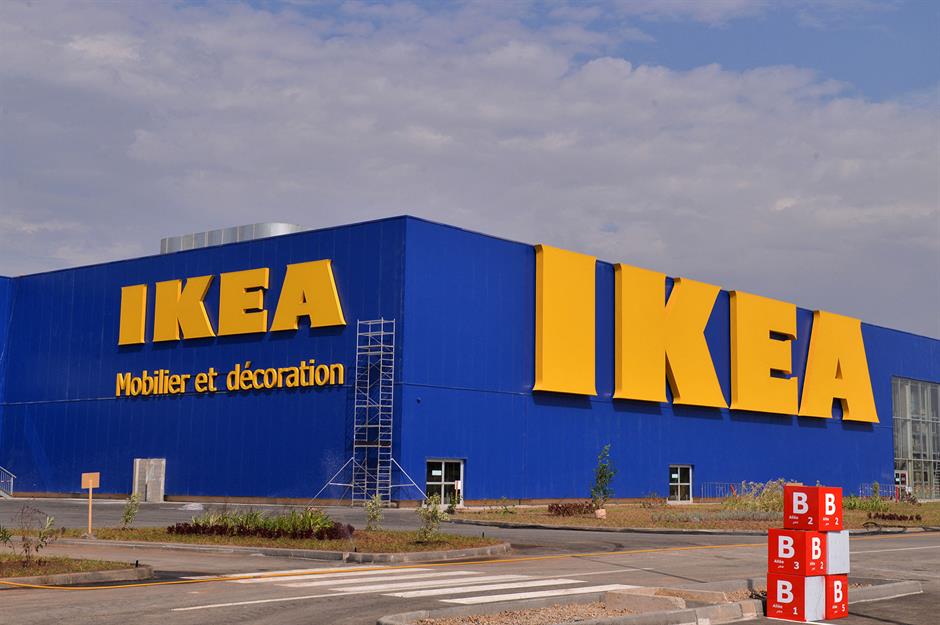
IKEA also has four locations on the African continent, having opened its first location in the Egyptian capital of Cairo in 2013. There is now a second location in Cairo, as well as two Morocco stores in Casablanca (pictured here) and Tetouan.
The Scandi company is careful to localise its products to specific markets. IKEA's in-house team worked closely with designers, architects and artists from South Africa, Kenya, Senegal, Egypt, Angola, Ivory Coast and Rwanda to inform its first African collection, ÖVERALLT, launched in 2019. The furnishings and products were oriented around the concept of modern rituals and their importance in the home.
Environmental solutions
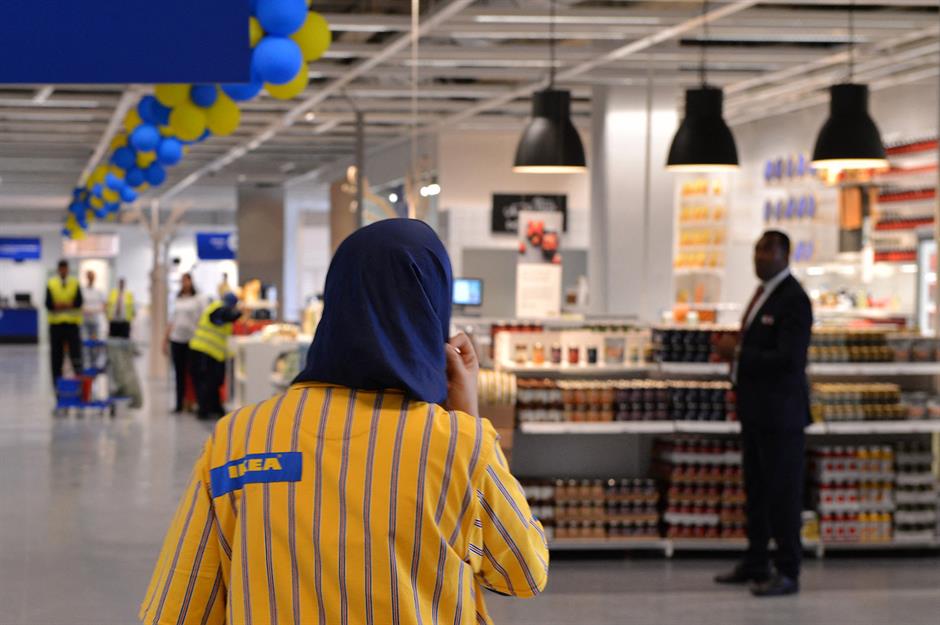
Particular areas of focus for the Egyptian market include affordable homes, smart homes, multigenerational homes and sustainable homes, according to IKEA Egypt's Country Marketing Manager Dalia Refaat.
There has also been a significant focus on products that promote clean air, which is often an issue in urbanised desert areas. A 'smart air' collection is promoted in stores, which includes a stylish air purifier disguised as a table that can help reduce indoor air pollution.
IKEA in Japan
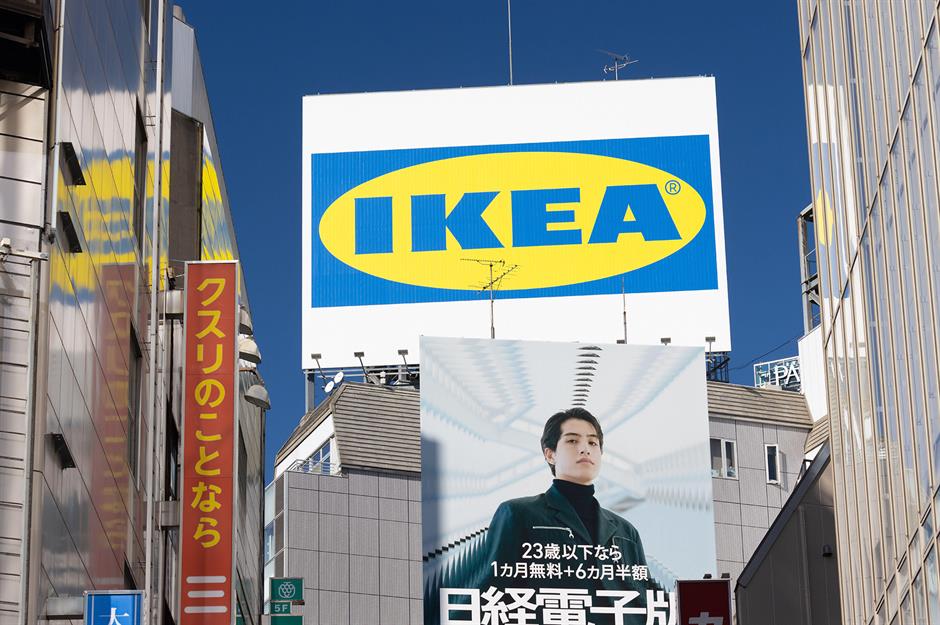
With the ever-rising popularity of the minimalist-chic Japandi style, it should come as no surprise that IKEA stores have been a big hit in Japan since its flagship store opened in 1977 in Tokyo.
There are now 13 IKEA locations throughout the country, which collectively hosted 27.5 million visitors in 2023. While IKEA classics play well in every market, certain items have proved particularly popular with Japanese customers.
Space-saving solutions
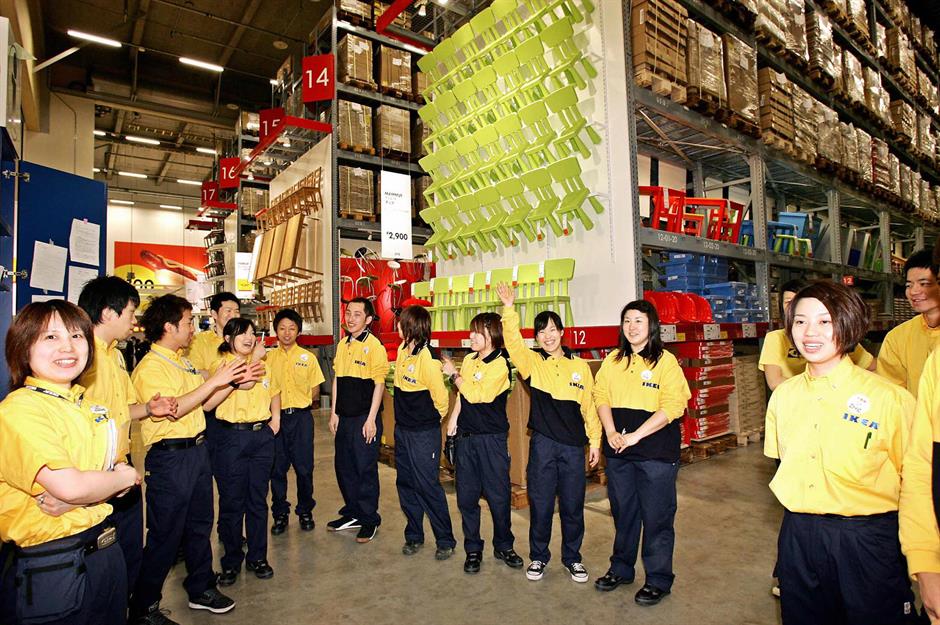
As homes are often on the smaller side, storage solutions and small-scale furniture specifically tailored for the Japanese market have proved to be in especially high demand.
Space-saving modular furniture, closet organisers and storage trolleys have all been big hits, as have functional accessories like hangers, freezer bags and – of course – the iconic blue tote. A place for everything and everything in its place!
IKEA in India
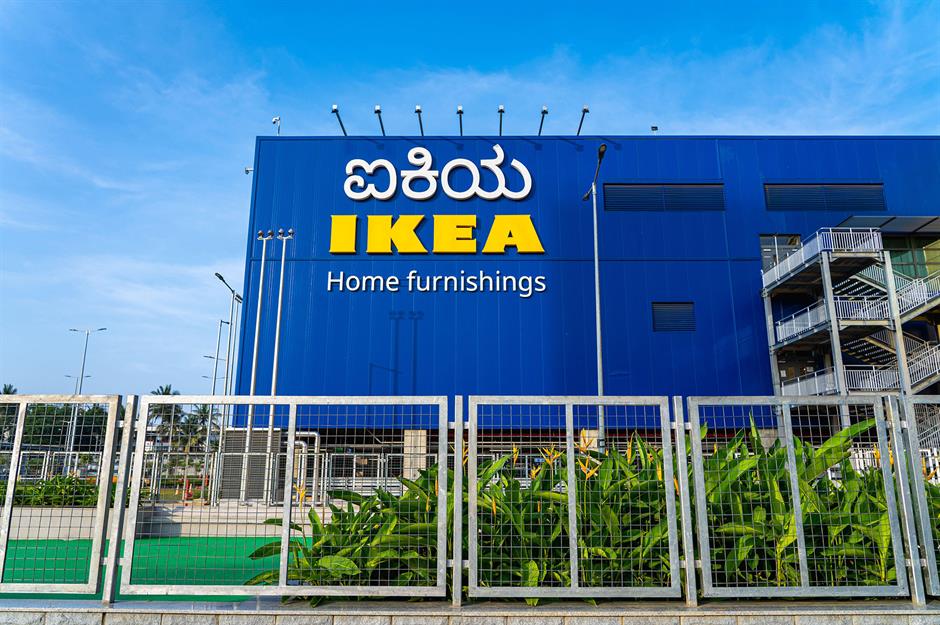
IKEA has been present in India for over 30 years and has four stores in the country. The company's product lines are regularly tweaked to suit the needs of the market. Speaking to BBC News, IKEA India's chief commercial officer Kavitha Rao said a third of IKEA’s Indian range changes every year and a quarter of its on-sale products are locally sourced.
There were also some product-specific alterations IKEA made to ensure it was meeting the needs of its Indian consumers.
Locally made products

Because of the country’s high levels of dust, shoppers in India tend to prefer closed storage units. IKEA accordingly reduced its wide range of open cupboards in favour of glass-fronted options.
When it comes to bedding, there is a cultural preference for harder mattresses, so IKEA released a locally-made mattress stuffed with coconut coir – the natural fibre extracted from the outer husk of a coconut – which has become one of the country's best-selling products.
Designs loved the world over
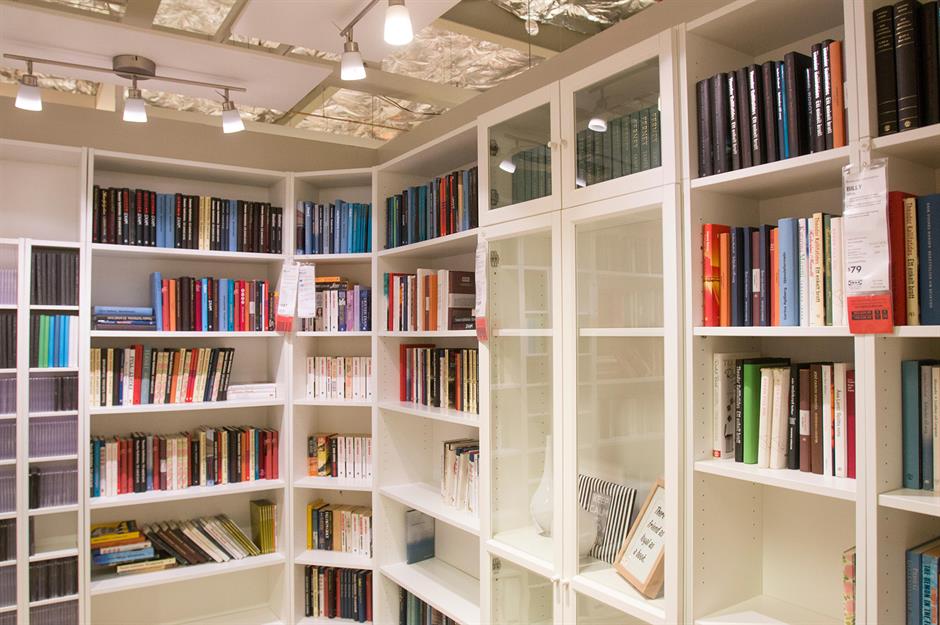
With an impressive rate of worldwide expansion, it's hardly surprising that some of IKEA's staple designs have become global household names over the decades.
However, none are arguably more famous than the BILLY bookcase. This archetypal product was designed in 1978 by Gillis Lundgren, who was so worried he’d forget the concept for the bookcase that he quickly sketched it out on the back of a napkin.
Iconic silhouettes
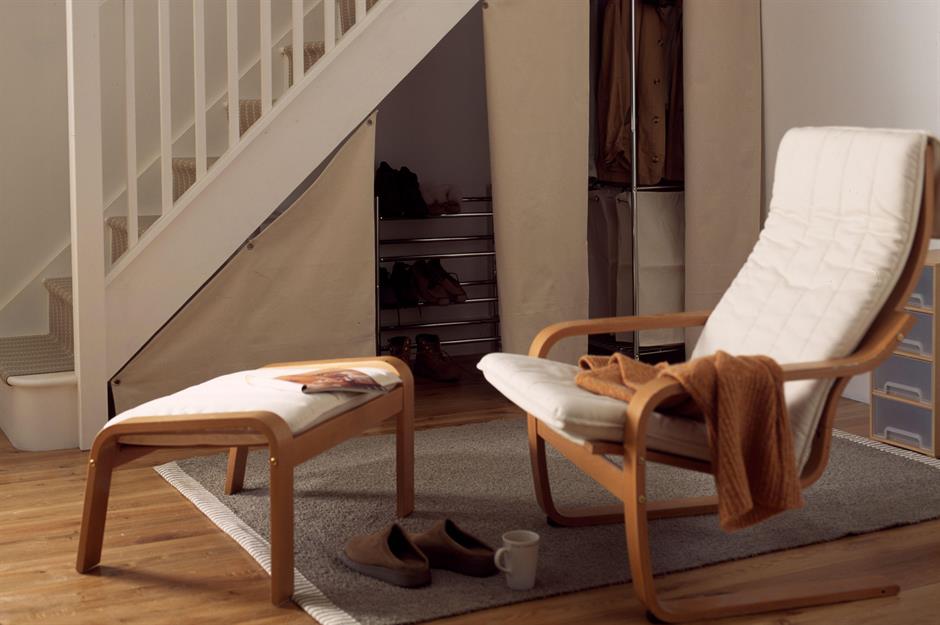
IKEA’s classic POÄNG chair has been in circulation for almost 50 years – but what makes it so popular? The strong frame, timeless design and the ability to customise both the frame and fabric are just a few of its main draws.
The classic Scandi aesthetic of this chair might fool you into thinking that it was designed by a Swedish native. However, the POÄNG chair was actually dreamed up by Japanese designer Noboru Nakamura.
IKEA’s very own goodie bag
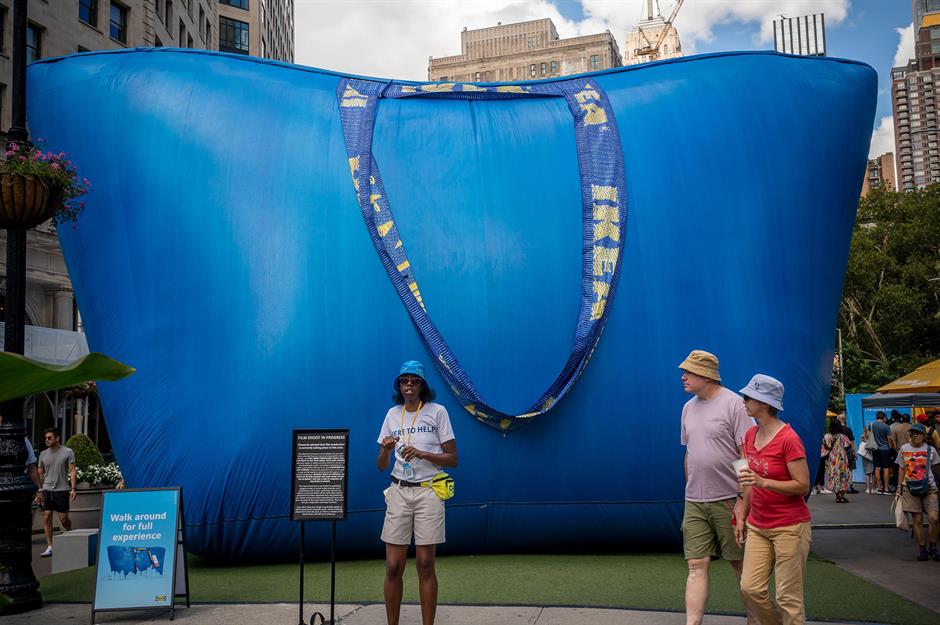
Then of course there's the iconic FRAKTA shopping bag. More than just a robust carrier, the beloved blue bag can double up as a storage sack or laundry bag once you’re back home.
The roots of the FRAKTA go back to the 1960s. Seeing their customers struggle with small plastic bags that broke easily, IKEA founder Ingvar Kamprad set about designing a strong, versatile bag that could carry everything from heavy furnishings to long rolls of wallpaper. Appropriately, its name means 'carry' in Swedish.
Collectors' items
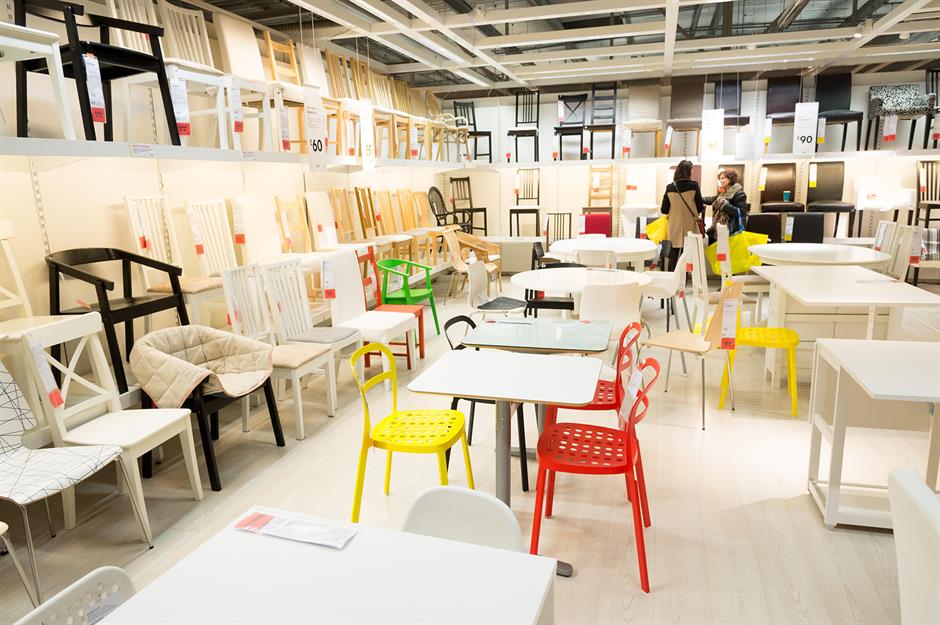
While IKEA is celebrated for its affordable flatpack furniture, many older IKEA pieces have become extremely desirable over the decades.
With famous designers including Verner Panton and Hella Jongerius on their roster for past collections, IKEA has built up a backlog of vintage furnishings that are now widely considered collectors' items. Remarkably, the most in-demand designs consistently sell for up to ten times their original market value.
IMPALA easy chair
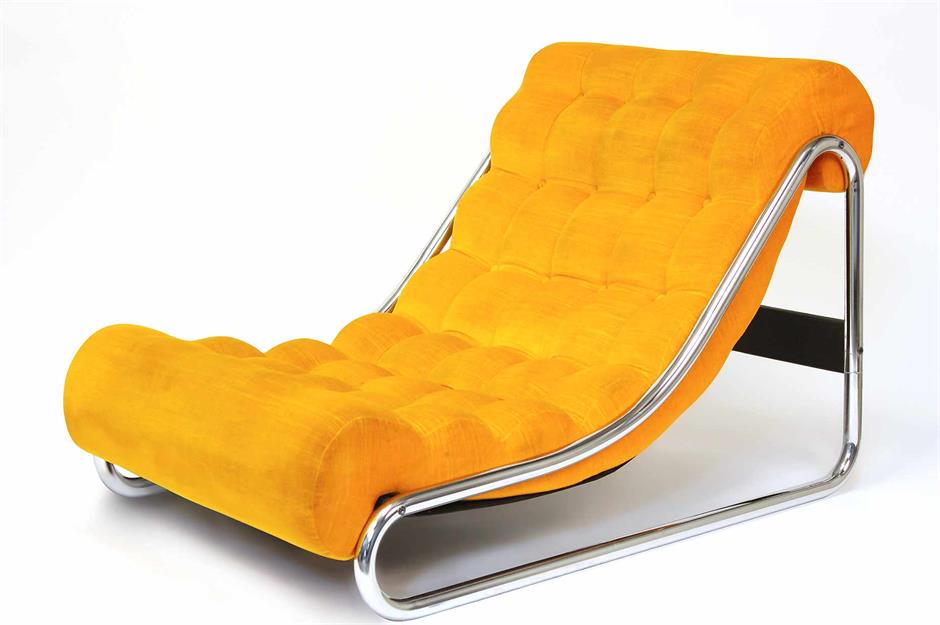
One such item is the low-slung IMPALA easy chair designed by Gillis Lundgren in the 1970s, which now carries a value of around $3,000 (£2.4k). With its reclined metal frame and quilted seat, it was marketed as a statement piece somewhere between an armchair and a bed.
Lundgren, the fourth employee to join the furniture giant in its infancy, was the mastermind behind numerous IKEA icons, including the aforementioned BILLY bookcase. He even helped devise the company's instantly recognisable logo.
BERGSLAGEN side table
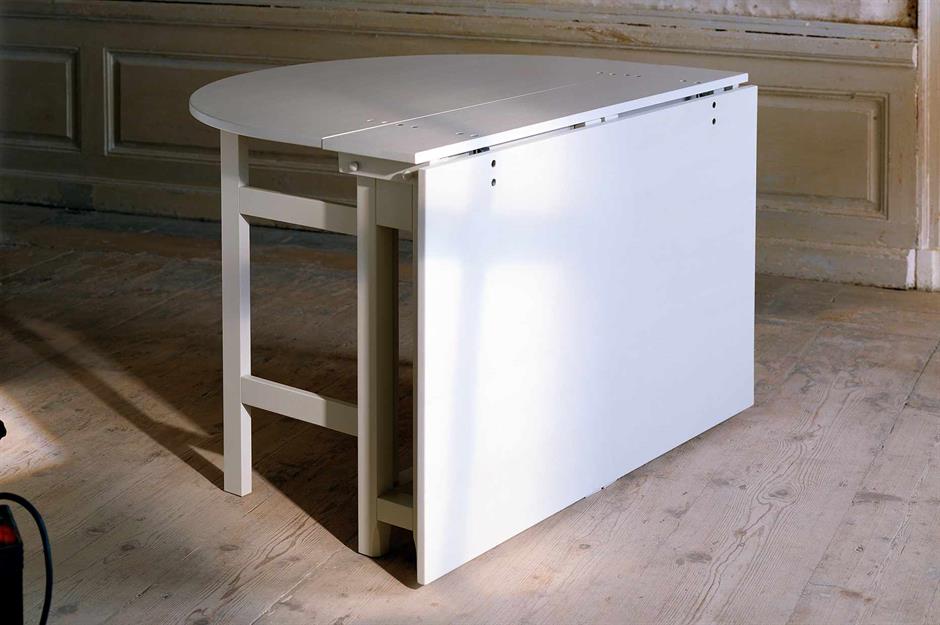
Ironically, much of the vintage furniture that is now valued so highly amongst collectors was a flop when it was first launched.
This BERGSLAGEN side table from the 1990s, which was part of the brand's 18th-century collection, may have looked somewhat ordinary when it first hit the market, but it sells for somewhere in the region of $567 (£450) these days.
MOMENT sofa
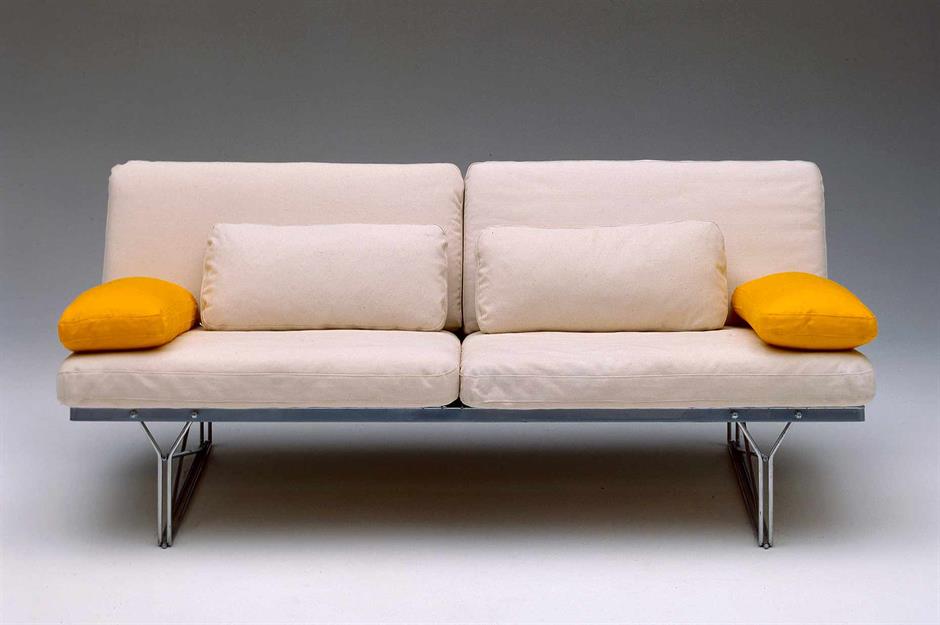
A staple of the mid-1980s, the MOMENT sofa was an incredibly innovative design of its time. Faced with the challenge of how to create a flatpack sofa, the company's designers devised this remarkable metal model. Like the rest of IKEA's catalogue, the metal frame could be assembled at home and accessorised with a choice of cushions to add comfort.
These sleek, stylish sofas are now incredibly desirable, with prices in 2025 reaching upwards of $3,800 (£3k) for a 1980s-era model.
LÖVET coffee table
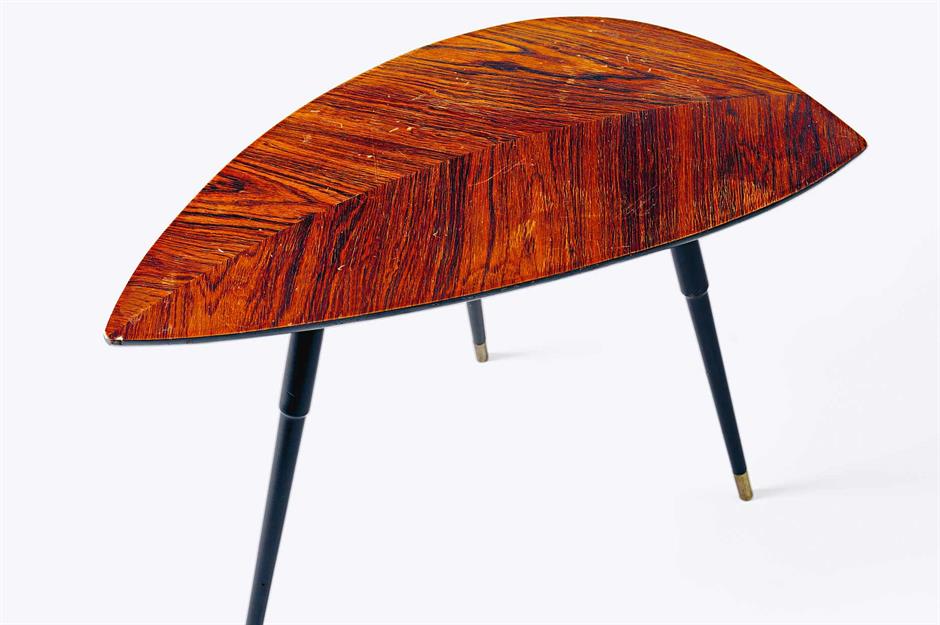
With its beautiful leaf-shaped tabletop and brass-covered feet, the LÖVET coffee table was an instant hit when it was launched in 1956. Fast-forward to 2021 and a new iteration of the classic design hit shelves: the LÖVBACKEN, proving the pull of this midcentury beauty is still strong.
However, there are clear differences between the original coffee table and its latter models. The LÖVBACKEN has a sale price of $90 (£71) in the US, while a 1950s LÖVET design came up for sale for $907 (£720) in more recent years.
IKEA's iconic chair designs
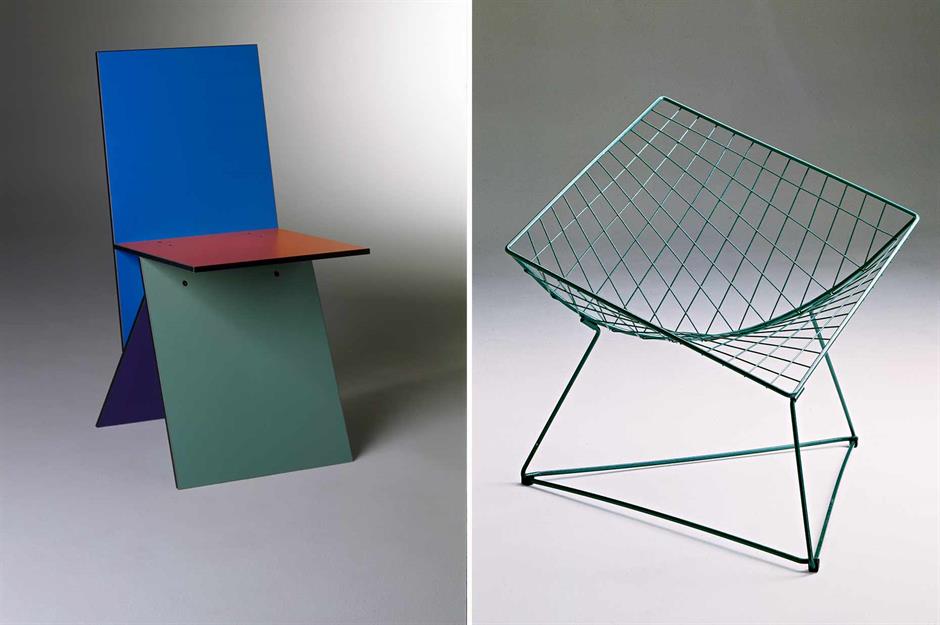
Pictured on the left, the Vilbert chair, designed by famous Danish designer Verner Panton, is a similarly in-demand item. Launched in 1993, the chair comprises coloured pieces of melamine MDF slotted together. Only around 4,000 units were ever produced, making it a hot commodity that can go for upwards of $1,100 (£832k) today.
Meanwhile, the metal Oti chair (right), a 1980s classic by architect Niels Gammelgaard, commands a hefty price tag too. In 2025, one of the vintage welded seats was listed for $963 (£764).
Vintage IKEA
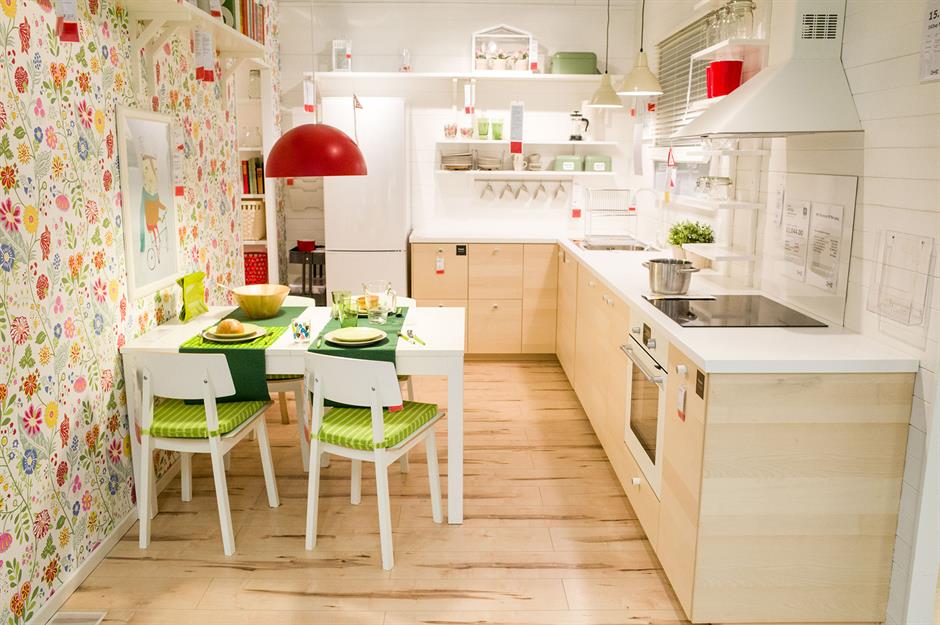
Given the appetite for its historic catalogue, it's unsurprising that IKEA's vintage revivals always prove popular.
When the world's favourite Swedish manufacturer marked its last major milestone, its 75th birthday in 2018, it rolled out a commemorative series of furniture collections to celebrate. Named GRATULERA, the special series encompassed IKEA’s most iconic pieces since the company’s launch in 1943.
Furniture through the ages
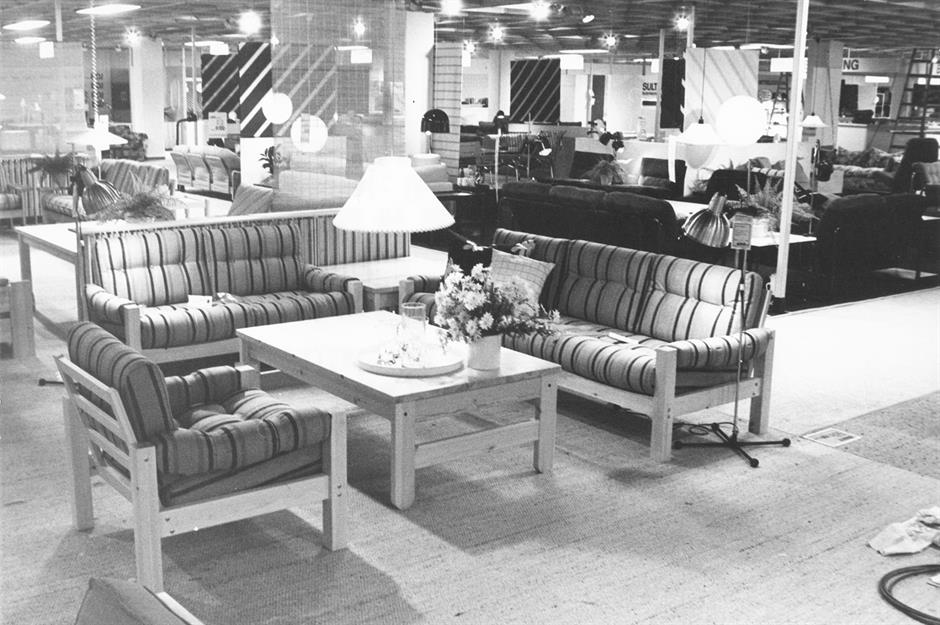
The vintage collection provided a fun look back at the iconic brand’s history and heritage. The series was released in three phases over Autumn 2018, with each stage focused on a specific period in the company’s past.
The first launch, which took place in August of that year, focused on the firm’s 1950s and 60s designs. The second, featuring 1970s and 80s furnishings, launched in October, while the third collection arrived in December, with a revival of the 1990s and 00s.
Smart home futures
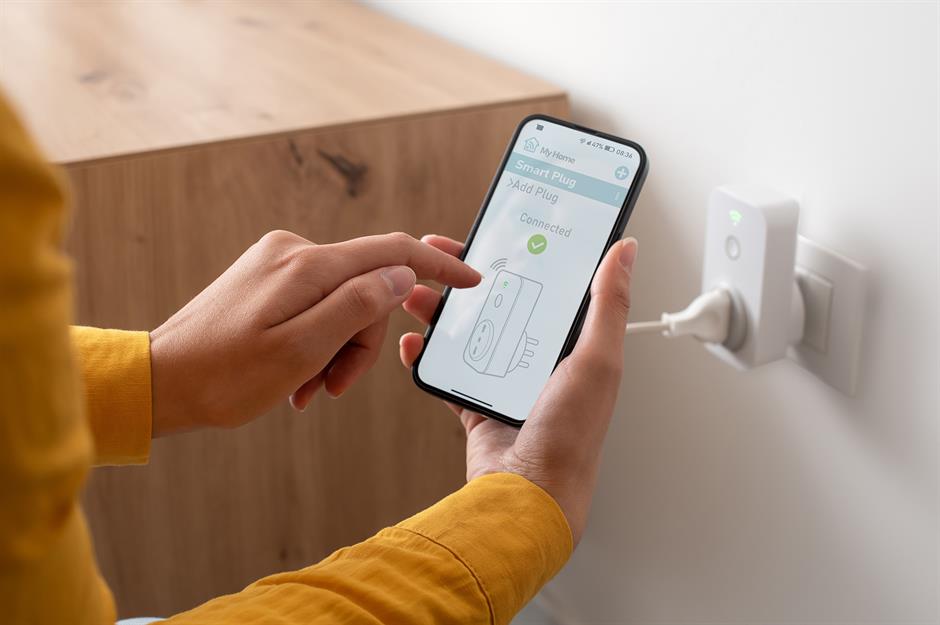
While it may return to its vintage designs from time to time, IKEA is also adapting its catalogue for the modern age.
The company has developed its own smart home platform, the aptly named ‘Home Smart’, which offers energy insights and helps homeowners keep an eye on their electricity usage.
More advanced still, the company has also released its first energy-monitoring smart plug, the INSPELNING, which it says can be used to control any household appliance when you're away from home.
IKEA's changing image
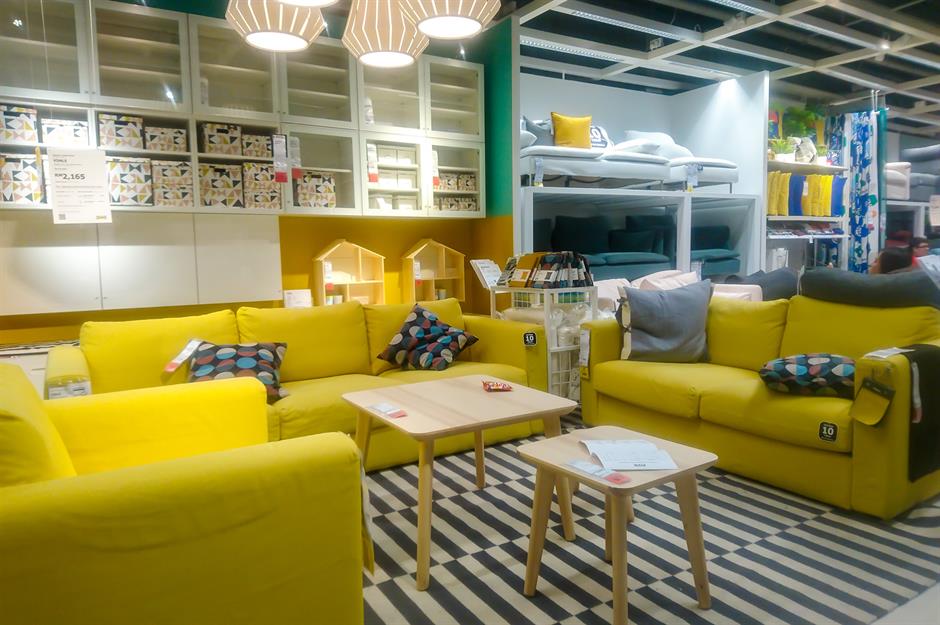
In more than 80 years of service, IKEA has come a long way, not only in its global footprint but also in terms of reputation. What started as a cheap and cheerful option favoured by students and newlyweds has evolved into a chic Scandi staple that's empowered the DIY movement and fuelled the small space revolution.
From its unique in-store customer shopping journey to iconic restaurant offerings, IKEA extends far beyond flatpack furnishings.
Loved this? Explore more interior ideas and inspiration for your home
Comments
Be the first to comment
Do you want to comment on this article? You need to be signed in for this feature